Art & Exhibitions
Architect I.M. Pei Gets a Posthumous Homecoming in M+ Retrospective
The first international survey of the architect's six-decade career looks at both his successes and his failures.
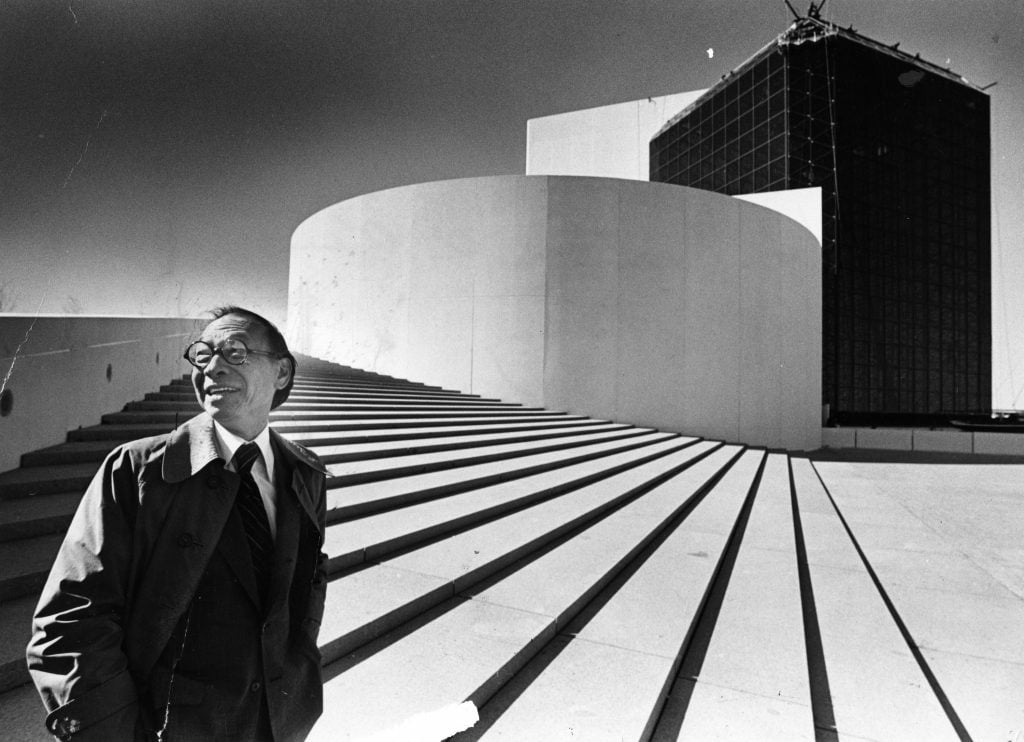
In 1956, with Grand Central station earmarked for demolition I.M. Pei pitched New York his Hyperboloid. Ambitious would be an understatement. Designed to be nuclear bomb resistant, the 80-story tower of glass and crisscross steel would have been the world’s tallest. Alas, funding limitations and bureaucracy saw the Beaux Arts masterpiece remain untouched.
Pei’s Hyperboloid is a reminder that the unbuilt dreams of history’s great architects are often as revealing as those realized. It’s a point the first international retrospective on Pei, “Life is Architecture,” hosted by M+, Hong Kong, insists we keep in mind. Alongside the photographs and original drawings documenting Pei’s remarkable six-decade career are a series of models including those never built.
These models are woven through the six thematic areas that M+ has chosen to explore Pei’s practice. It begins with “Transcultural Foundations” that shows how Pei’s early exposure to numerous cultures helped develop his singular eye. Born in 1917 to a prosperous family in Guangzhou, China, Pei moved to Hong Kong and later Shanghai as his father climbed the ranks of the Bank of China.
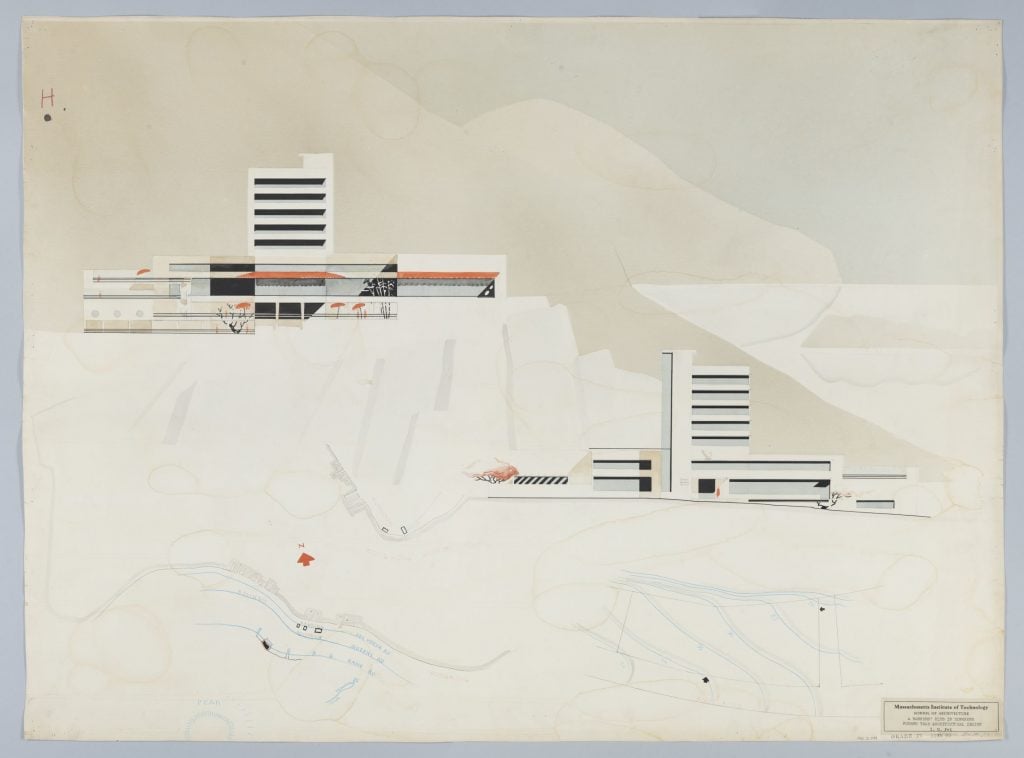
I.M. Pei’s Bankers’ club drawing from undergrad project at MIT. Photo: M+.
As was customary for affluent Chinese families of the 1930s, Pei was sent abroad for study. He received an architecture degree from the Massachusetts Institute of Technology in 1940 and M+ displays his final undergrad project, a banker’s club in Hong Kong, a sleek white thing that emerges from Victoria Peak and features underground squash courts and bowling lanes.
It’s a student project with future clientele firmly in mind. East Asia’s political instability, however, scuppered such plans. With the communists on the rise in China and war looming, Pei remained in America at the behest of his father studying under the founder of the Bauhaus School Walter Gropius at Harvard. In retrospect, it’s easy to see such influence on Pei’s sense of line and use of concrete, but first he had to make a living.
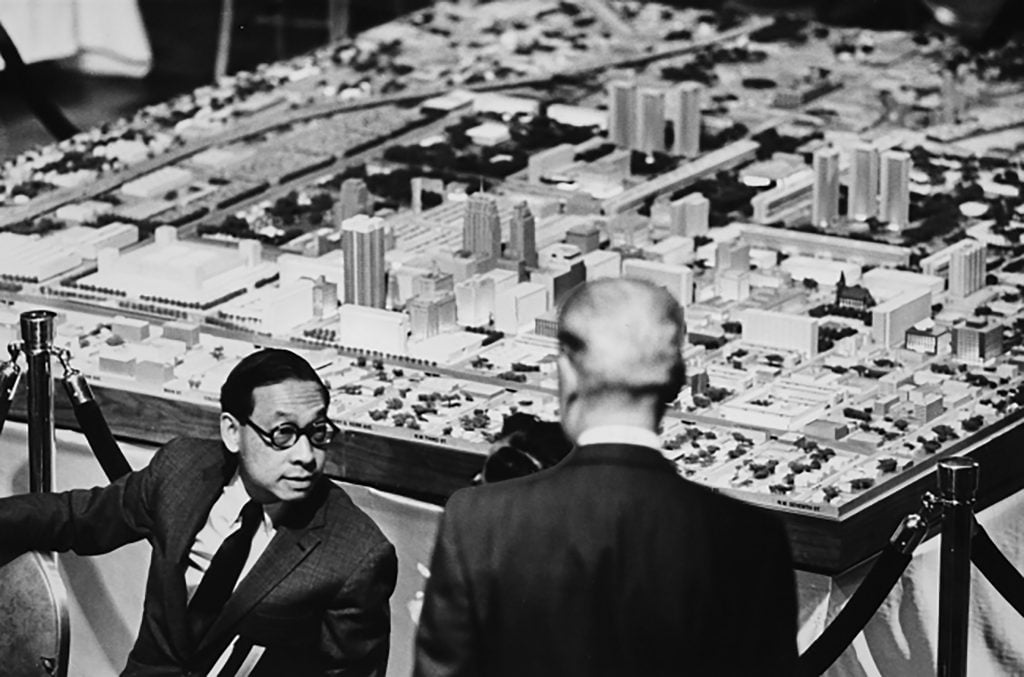
I.M. Pei explains his plans for Oklahoma City in 1964. Photo: The Oklahoman-USA Today Network.
Pei did so as the in-house head architect at Zeckendorf where he brought rare aesthetic attention to large public projects. Highlights included Kips Bay Plaza and Silver Towers in New York and Society Hill Towers in Philadelphia. It was an education in civic minded building and the nitty-gritty of how governmental projects are executed. Not everything succeeded. His redevelopment plan for Oklahoma City was heavy handed and failed to revitalize its downtown.
He branched out in the 1960s via I.M. Pei & Associates achieving a major breakthrough by winning the assignment of the John F. Kennedy Library. Though mired in political and planning difficulties for 15 years, in the meantime commissions rolled in, particularly museums, as detailed in M+’s “Art and Civic Form.” The Everson Museum of Art in 1968, the Herbert F. Johnson Museum of Art in 1973, and then most notably the East Building of the National Gallery of Art in Washington D.C. in 1978.
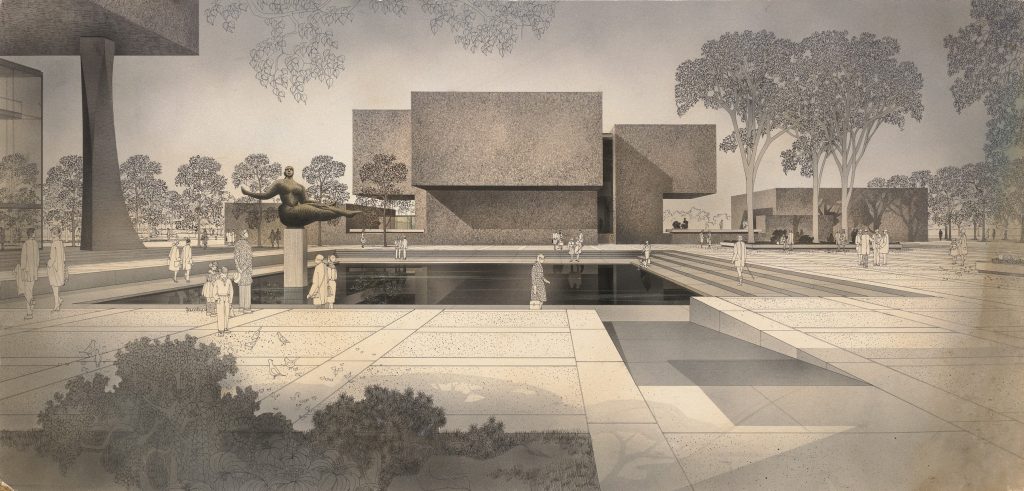
I.M. Pei’s design for Everson Museum of Art. Photo: M+.
One success led to the next. Pei became known for his imposing, clean-lined buildings centered on simple geometric shapes. His work in Washington D.C. impressed French president François Mitterrand, who invited Pei to redesign the Louvre’s entrance. Pei’s 70-foot glass pyramid was divisive upon its unveiling. Today, it’s a symbol of Paris.
For all his skill as an architect, Pei was equally adept at navigating client relationships. It’s the focus of “Power, Politics, and Patronage” and proved especially useful in the ‘80s when China came calling for its prodigal son. Uninspired by four decades of Soviet architecture and uninclined to erecting skyscrapers in the country’s booming metropolises, Pei largely waited (barring Fragrant Hill Hotel, which proved disappointing).
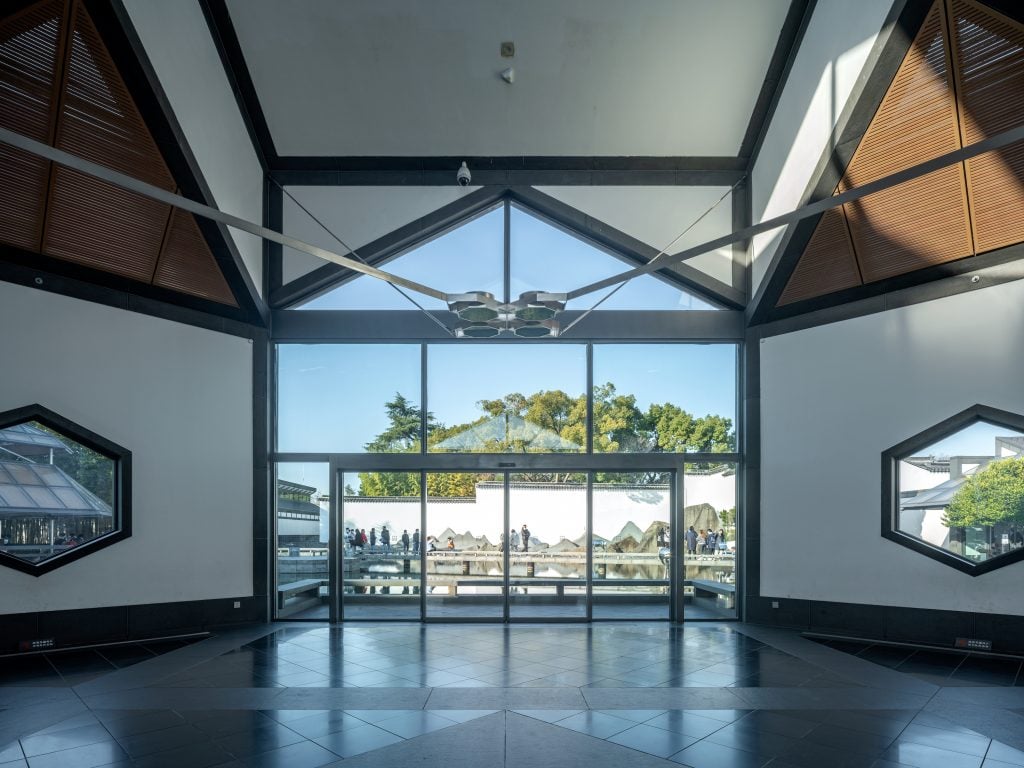
The I.M. Pei designed Suzhou Museum opened in 2006. Photo: M+.
In 2002, he began work on Suzhou Museum, his family’s hometown spanning half a millennia. The museum was a masterwork, a blend of Chinese and modernist traditions, geometry and calligraphy, light and dark.
Pei was known to say that lasting architecture must have its roots—and in Suzhou Pei had finally returned to his.
“I. M. Pei: Life is Architecture” is on view at M+ Museum, 38 Museum Drive, West Kowloon Cultural District, Hong Kong, from June 29.





